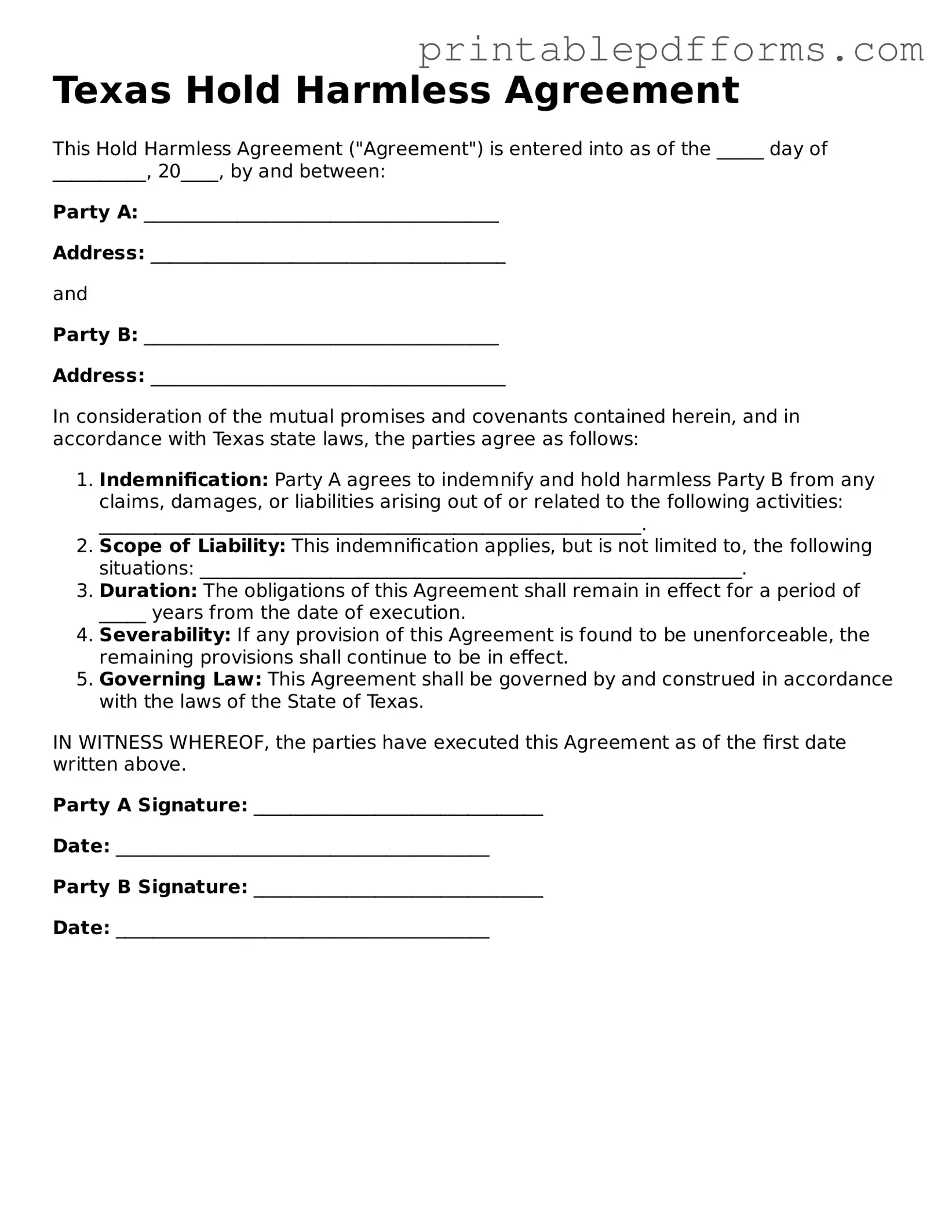Texas Hold Harmless Agreement
This Hold Harmless Agreement ("Agreement") is entered into as of the _____ day of __________, 20____, by and between:
Party A: ______________________________________
Address: ______________________________________
and
Party B: ______________________________________
Address: ______________________________________
In consideration of the mutual promises and covenants contained herein, and in accordance with Texas state laws, the parties agree as follows:
- Indemnification: Party A agrees to indemnify and hold harmless Party B from any claims, damages, or liabilities arising out of or related to the following activities: __________________________________________________________.
- Scope of Liability: This indemnification applies, but is not limited to, the following situations: __________________________________________________________.
- Duration: The obligations of this Agreement shall remain in effect for a period of _____ years from the date of execution.
- Severability: If any provision of this Agreement is found to be unenforceable, the remaining provisions shall continue to be in effect.
- Governing Law: This Agreement shall be governed by and construed in accordance with the laws of the State of Texas.
IN WITNESS WHEREOF, the parties have executed this Agreement as of the first date written above.
Party A Signature: _______________________________
Date: ________________________________________
Party B Signature: _______________________________
Date: ________________________________________
